#mesopotamian
Explore tagged Tumblr posts
Text
💕Goddesses of love💕
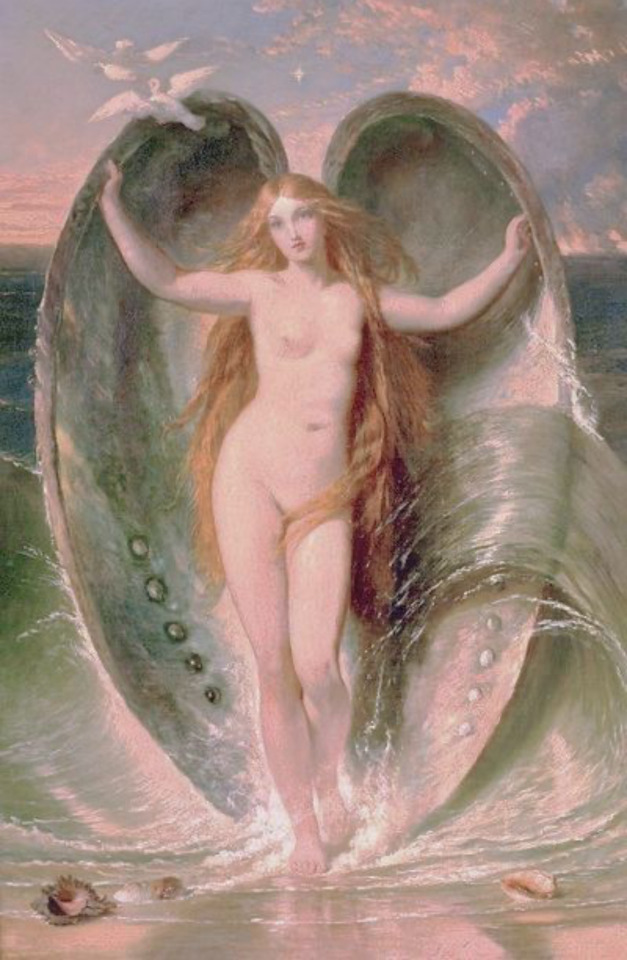
Aphrodite: Greek Goddess of love, beauty, sex and lust.
Aphrodite, the goddess of love and beauty, emerged from the sea in a scallop shell and sailed to Cyprus. She possessed a magical girdle and had many lovers, including Ares and Adonis. Ares killed Adonis out of jealousy, leading to the creation of anemones. Adonis became a god split between the Underworld and Earth due to Aphrodite's love. She travels with the Three Graces and bestows joy, brilliance, and abundance upon mortals. She aids in romantic love and is associated with myrtles, roses, and anemones.
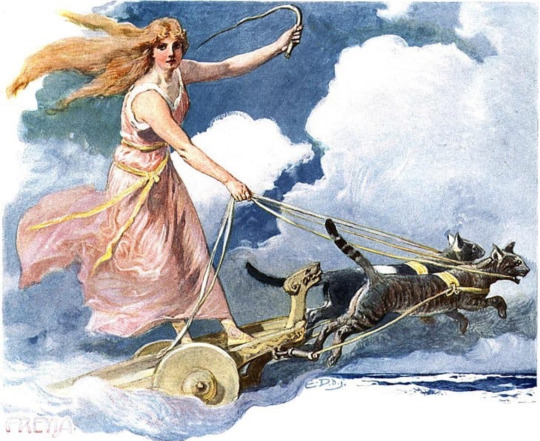
Freya: Norse Goddess of love, war, fertility and magic.
Freya, the Norse goddess of love and ruler of war and death. She mediated conflict between warring groups of Norse gods and established peace in Asgard. She is known for her beauty, sorcery, and sexuality, as well as for riding a cat-drawn golden chariot. Freya wears a falcon-feathered cloak that allows her to move quickly between heaven and Earth and has an enormous palace in Asgard where she celebrates with the souls she chooses from the battlefield. In one myth, she obtains the famous amber necklace, Brisingamen, from four dwarves by sleeping with them, beauty for beauty.
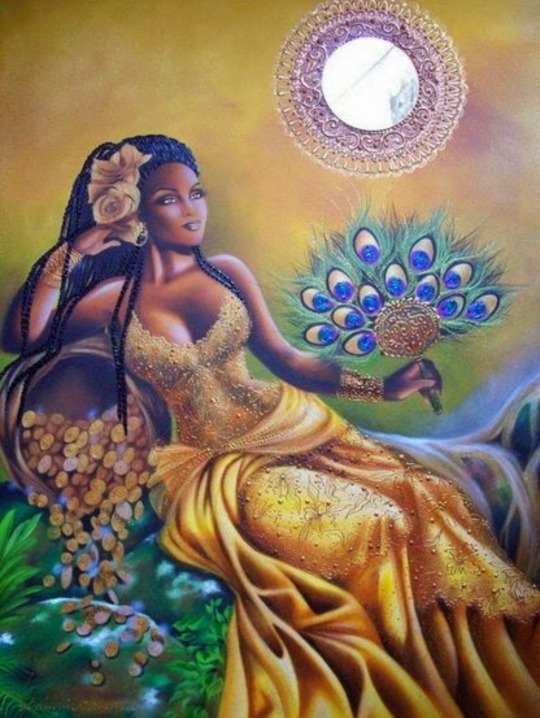
Oshun: African Goddess of love, beauty, prosperity & femininity.
Oshun is a goddess of love in the Yoruba religion. She is one of the 7 orishas and the source of power for all the other orishas. Oshun has the ability to make all things flow in the universe through her love and strength. She played a significant role in encouraging Ogun, father of civilization, to continue creating. Oshun is the only goddess who can carry messages between the mortal world and the Supreme Creator in heaven. In Nigeria, there is an annual ceremony called Ibo-Osun where women dance for Oshun during a feast of yams, with the best dancer winning Oshun's favor and becoming the village adviser on healing and fertility.
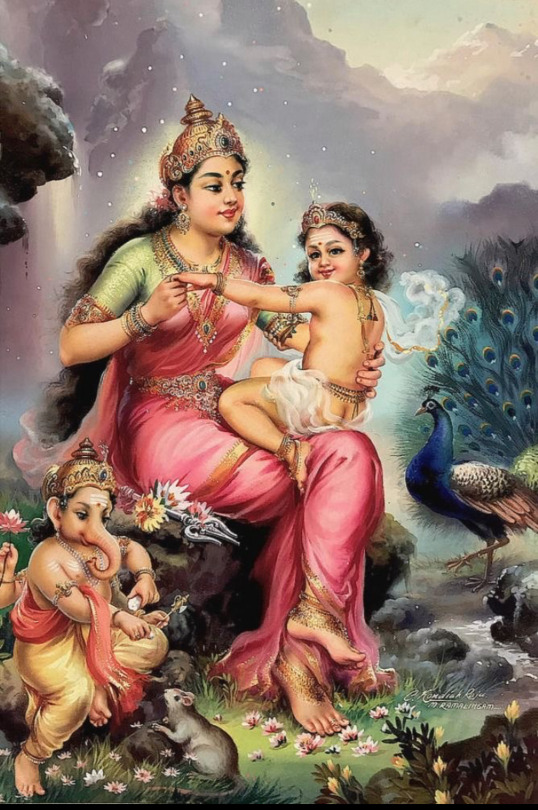
Parvati: Hindu Goddess of love, fertility, harmony and motherhood.
Parvati is a golden Hindu goddess known for love and devotion, forming a holy trinity with Saraswati and Lakshmi. She was born in the Himalayan mountains and embodies nurturing feminine energy. Parvati won over her husband, Shiva, through patience and determination in asceticism. Parvati is the creator of her son Ganesha, the elephant-headed god of wisdom. She is also worshiped for her strength and ferocity. In one legend, she transformed into the fearsome goddess Kali-ma to overcome & destroy demons who threaten the earth, showing her protective nature.
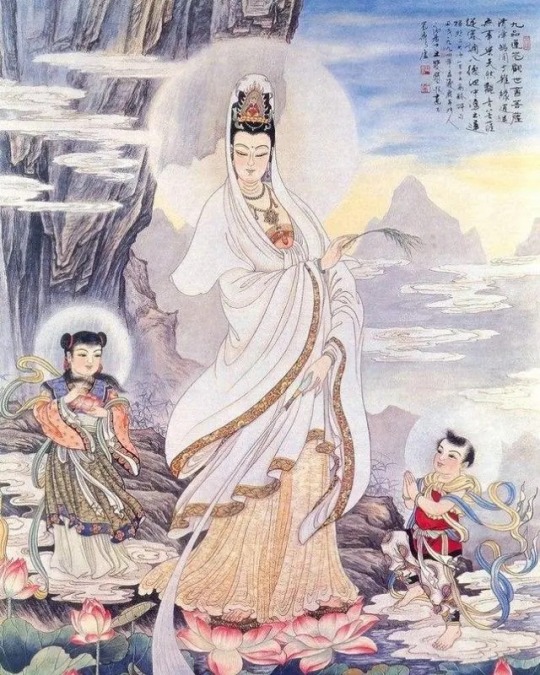
Guan yin: Buddhist Goddess of compassion, love, peace and kindness.
Guan Yin, originally a mortal princess named Miao Shan, was known for her compassion and kindness. Despite her father's cruelty, she devoted herself to helping others and performing miracles. After her death, she chose to remain in human form as a bodhisattva to help suffering beings, eventually becoming a goddess. By simply invoking her name, people can receive protection from harm. Guan Yin is often depicted in a white gown on a lotus throne and is revered by her followers as a symbol of love, compassion & purity. Her devotees often follow her vegetarian diet on her sacred days. Guan yin is not only the goddess of compassion, but the literal personification of it.
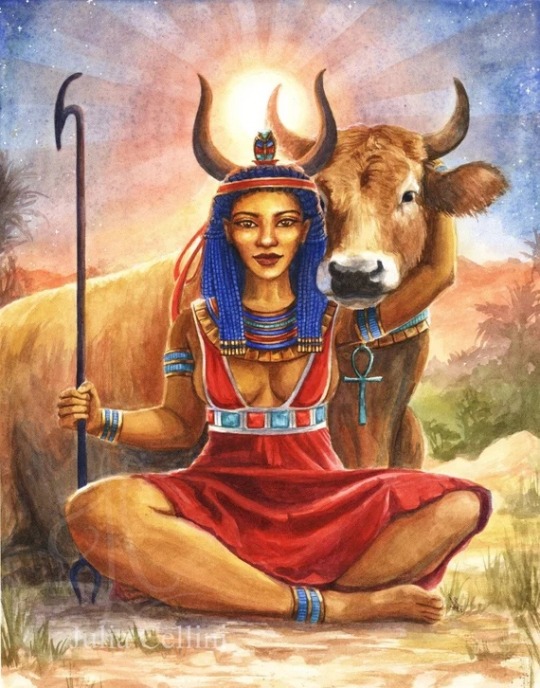
Hathor: Egyptian Goddess of fertility, love, womanhood and the sky.
Hathor, ancient Egyptian goddess of love and joy, has been revered for over 3,000 years. Known as the Gentle Cow of Heaven, she provided milk to the Sun God Ra, making him and other pharaohs divine. Hathor created the Milky Way and is often depicted wearing a crown with cow horns. She is worshipped through joyful ceremonies of music and dance and is the most beloved goddess in ancient Egyptian belief. Hathor is also the goddess of the Underworld, protector of females, and champion of romantic bonds. She can appear in different forms and her symbols are the sistrum and hand mirror.
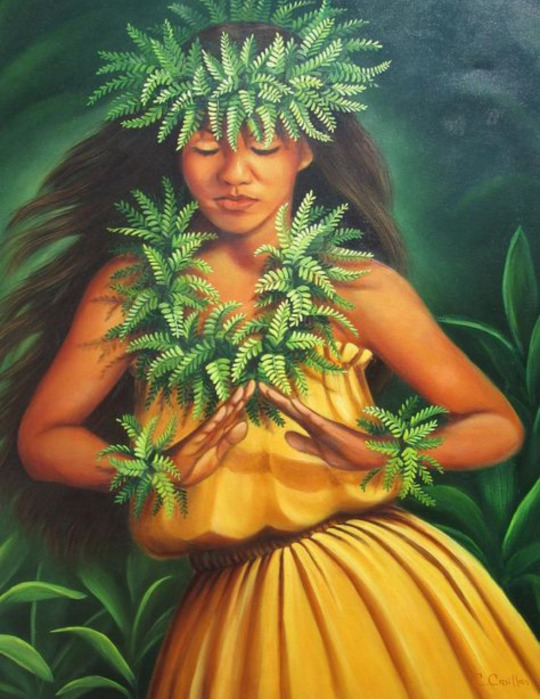
Laka: Hawaiian Goddess of love, wilderness, the hula & music.
Laka is a Polynesian goddess of love and wilderness who taught humans the art of the hula dance. She is married to the fertility god Lono, and rain is considered a sacred time for them. Dancers in training build altars to Laka with her favorite flowers and plants, and offerings are taken down to the ocean after performances to thank her for her blessing. She is a Goddess who rules over all vegetation. Plants sacred to her are: maile, Lama, hala pepe, `ie`ie, ki, `ôhia lehua, `ôhelo, and palai.
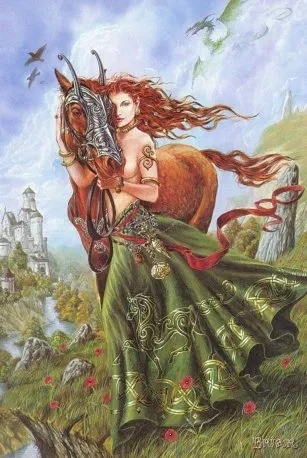
Aine: Irish Goddess of the summer, love, wealth and light.
Áine is a powerful and loving fairy queen in Irish legend, associated with agriculture, animals, and light. She is celebrated at the Midsummer Festival in Limerick, where people run up her hill to seek her blessing. She is also a survivor of sexual abuse in legends, where she shows strength and guides women to empowerment. Áine is depicted with red hair, a headband of stars, and surrounded by her animals. She can transform into a red mare who is unbeatable in speed.
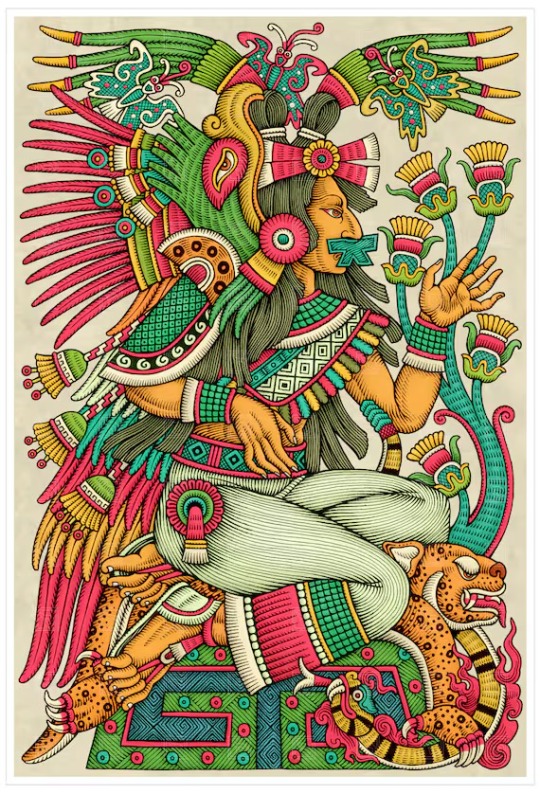
Xochiquetzal: Aztec Goddess of fertility, beauty, flowers and love.
Xochiquetzal was a powerful and complex Aztec goddess known for her beauty and seductive nature. She was worshipped as a patroness of lovers and prostitutes, encouraging love-making for pleasure rather than reproduction. Despite her associations with sexual relationships, she also had the ability to absolve humans of sins unrelated to sex. She was married to the water god, Tlaloc, and was considered a consort to the creator deity, Tezcatlipoca. Xochiquetzal was widely worshipped and honored through great rituals that included acts of sacrifice and confessions.
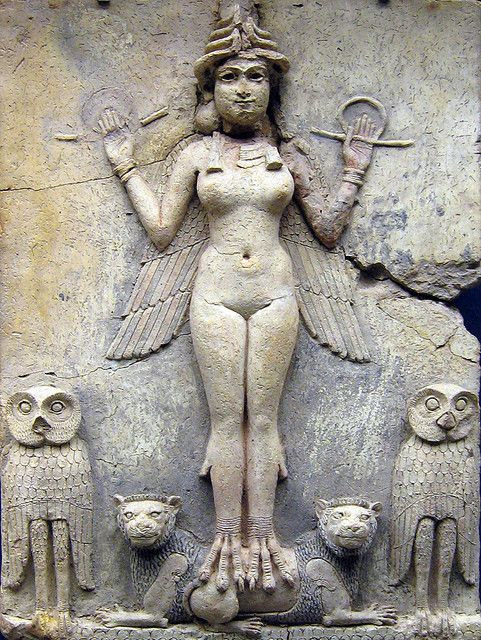
Ishtar: Mesopotamian Goddess of love, war, fertility and power.
One of the oldest goddesses in the world, Ishtar, the goddess of war and sexual love, was the queen of heaven. Ishtar is considered a member of the special class of Mesopotamian gods called the Anunnaki. Ishtar is often called Inanna, she is also an astral deity, linked to the planet Venus, and was worshipped widely in the ancient Middle East. She was known as the Queen of the Universe and had powers attributed to various other gods. Ishtar was the very first goddess of love, Mesopotamians described her in her many legends and poems as young and strikingly beautiful, with piercing, penetrating eyes.
#Religion#hindu mythology#hinduism#chinese mythology#irish mythology#greek deities#greek goddesses#greek mythology#norse paganism#norse mythology#greek paganism#buddhism#paganism#deities#goddesses#Parvati#ishtar#mesopotamian#aztec mythology#Xochiquetzal#aine#Laka#hawaiian mythology#Polynesian#egyptian mythology#hathor#Oshun#Yoruba#african mythology#lotus-list
202 notes
·
View notes
Text

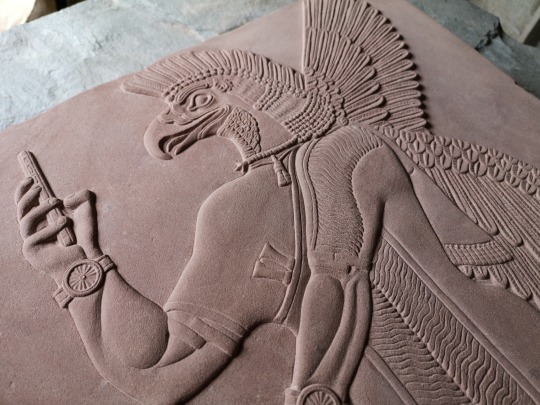

Out of place artifact.
Hand carved sandstone, based on an ancient Assyrian Winged Genie, but with a twist.
#carving#stone carving#art#traditional art#sculpture#assyrian#ancient history#archeology#history#ancient artifacts#mesopotamian art#mesopotamia#mesopotamian#genie#ancient art#ancientmonuments#antiquities#neoassyrian
519 notes
·
View notes
Text

Judith and Holofernes by Horace Vernet
#horace vernet#art#judith#holofernes#religious art#biblical#bible#religion#history#jewish#assyria#assyrian#tent#christianity#christian#nineveh#nebuchadnezzar#mesopotamia#mesopotamian#sword#helmet#shield#heroine#european
71 notes
·
View notes
Text
are you ever having a good day and then you suddenly think about gilgamesh and enkidu and then you just collapse in grief or do I need to up my dosage of antidepressants?
#gilgamesh#epic of gilgamesh#enkidu#mesopotamia#mesopotamian#i ship them#the epic of gilgamesh#aka the gayest epic ever recorded#text
181 notes
·
View notes
Text

March 20, 2025 — Altar for Emesh ☀️🌷
Happy Spring Equinox
Gods on altar: Inana, Ĝeštinana, Dumuzid
This is a modern festival celebrating arrival of Spring & Summer. I had to localize the practice/meaning of Emesh and its relationship to Dumuzid link
I was able to write my entire ritual today and create the altar but couldn't preform it. I had planned to do the first two tasks leading up to today but somehow this entire week got filled with appointments so I didn't have energy. Another post will follow with the details once I've actually preformed the ritual.
#polytheism#paganism#landof2rivers#inana#inanna#spring equinox#spring#summer#emesh#sumerian festival#modern festival#sumerian#mesopotamian#dumuzi#dumuzid#izkurereshkigal altars#altar#altars#shrine#sacred space#holiday#Geshtinana#Ĝeštinana
25 notes
·
View notes
Photo

Source details and larger version.
23 notes
·
View notes
Text
Anzu - bird of thunder in Mesopotamian mythology

#mesopotamian mythology#Mesopotamian#mesopotamia#sumerian#ancient mesopotamia#ancient sumeria#sumeria#mythology#monster#thunder#crayon drawing#crayon#traditional art#aesthetic#artist on tumblr#bright colours#traditional drawing#traditional illustration#myth
29 notes
·
View notes
Text

Tinkering around in blender and gimp rn
#my wips#sims 4#s4mm#sims 4 history#mesopotamia#mesopotamian#assyrian#assyria#sumer#sumerian#queen puabi#bablyonian#bablyon#wip hair#wip outfits
197 notes
·
View notes
Photo

Source details and larger version.
Here are collected the best lions I've encountered in my research to date.
14 notes
·
View notes
Text
𒀭𒈹, The Queen of Heaven


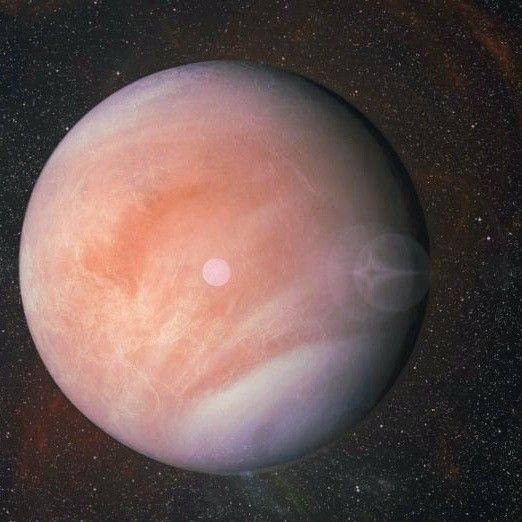
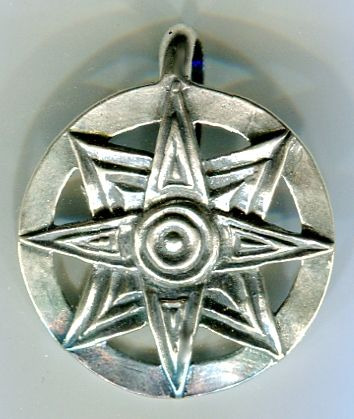
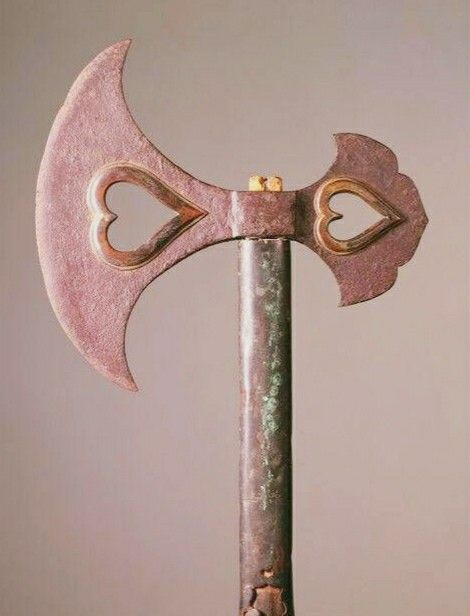

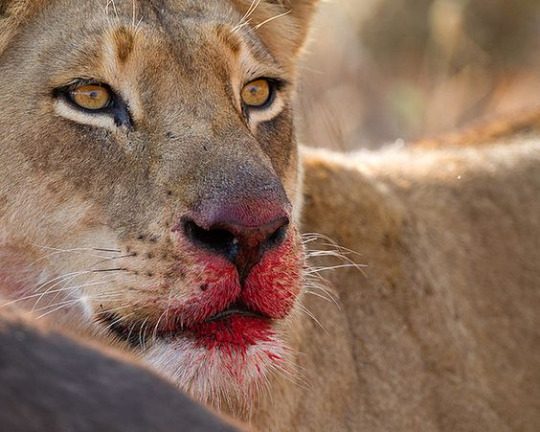
"She stirs confusion and chaos against those who are disobedient to her, speeding carnage and inciting the devastating flood, clothed in terrifying radiance. It is her game to speed conflict and battle, untiring, strapping on her sandals."
137 notes
·
View notes
Text


[Late Summer] It was airy, It was humid, It was beaming, It was bright. The sand could burn soles of your feet, It mattered not. All you had was feet and the niqab in the hot sun. The feet was scared, the hands dry, the eyes teary. But we move forward. The eyes unwatered, the body tired. But we move forward. Her ways are perfect. Oh how Her ways are perfect. Over time the path became clear as the rock stable and unwavering.
Uruk, The land of thousand Sun Ennana stood at lapis polished shrine, Oh how it stung. In the distance, A beautiful faced man riding a dromedary riding as He was sun as He was the Sun. Ennana of Uruk as blessed the masses in her presence. The djinn of sands quiet in Her presence. For She is the Queen of Heaven & Earth. As the Oasis grew near, I was transfixed by this beautiful man resting near the palm trees chugging the water as if He was as wild as an white-eyed caracal.

He sat with with His followers with His generals: Lebal & Abalam attended Him for He was King Paimon. As His crown shined like stars as beautiful gold dripped from His crown.

I had tears in my eyes from His grandiose beauty, awe struck at the outside of the Temple of Ennana at the shine of Uruk. I pleaded with the King as He was loyal to Lucifer as He may escort me to the shrine of Ennana as He obliged. As the whisk of His hand, the stairs were ever present in my way, the steps a shade of brown from a original yellow washed away with time. I thanked Him as one of my guardians, drank over beer, danced, cried for His presence as He was great and wise. As He with His generals went forward with their journey as it was never truly "done" with His journey.

As I walk the lapis lazuli paved steps, an legion of performers crashing of the drums booming from ear the ear, as it was the Akītu festival in the autumn. Minutes turned to hours going up these stairs as I reached the top. O' Ishtar was an the top of the shrine of Uruk! A being only I could describe as Attar with his radiant wings declared "I am the Morningstar, I am Lucifer, I am Esophosos!" I started to cry happily.
Her star shown brightly, gleamed the brightness the heavens could glow. As I touched gently the star, the radiance was unmatched. As Her ways where perfect. I was an lucky one to have witnessed it, every emotion, every facet of Ishtar I could witness just for a split second.
♡ Multum amor ♡

#Innana#Ishtar#mesopotamian#mesopotamia#astral work#king paimon#paimon#all about marcques#UPG#godspouse#thestic luciferian#theistic luciferianism#lucifarianism#hail lucifer#lord lucifer#lucifer deity#lucifer devotee#luciferian#luciferian witch#luciferianism#luciferism#lorelei speaks
6 notes
·
View notes
Text
💀Goddesses of death💀
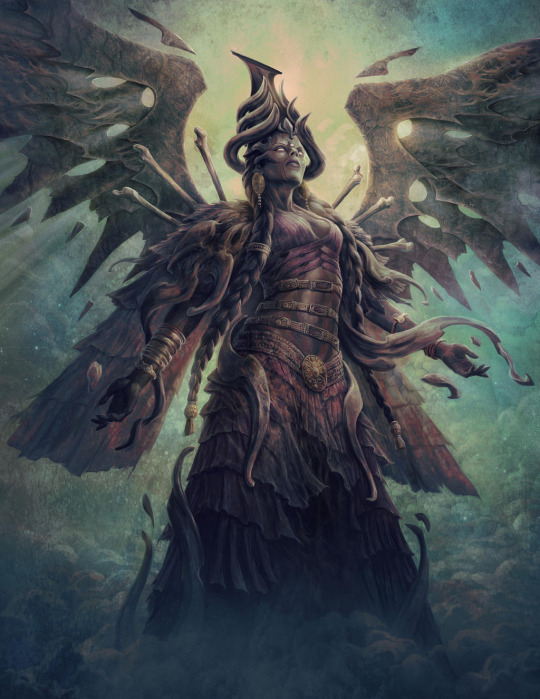
Ereshkigal: Mesopotamian goddess of death, the dead, and the underworld.
Ereshkigal is the queen of the underworld, the keeper of balance, the punisher of evil & maintains order against chaos. She may have also been associated with the earth & the waters of life in Mesopotamian legend. She was associated with the city of Kutha and featured in the myth of Inanna's Descent to the Underworld. She was also connected to other deities such as Nergal, Ninazu, and Ningishzida. Ereshkigal was said to be the sister of Inanna.

Oya: African Goddess/orisha of death, storms, winds & thunder.
Oya is a powerful goddess/orisha in Nigeria who controls storms and death and is married to the thunder god, Shango. She is a shape-shifter who often appears as a mortal woman or animal while overseeing justice and bringing sudden change. She is also a guardian of women and the dead, able to call forth death or delay it. Oya is associated with rebirth and magic, and her favorite colors are maroon and copper.
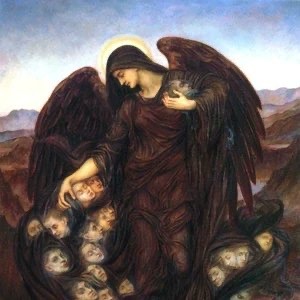
The Keres: Greek goddesses of Death, bloodshed & violence.
The Keres were female death spirits and goddesses who personified violent death. They were drawn to bloody, intense deaths on battlefields and were daughters of Nyx, Goddess of Night. They did not have the power to kill but would wait and then feast on the dead. They were described as dark beings with gnashing teeth & claws, with a thirst for human blood. They would hover over the battlefield and search for dying/ wounded men.
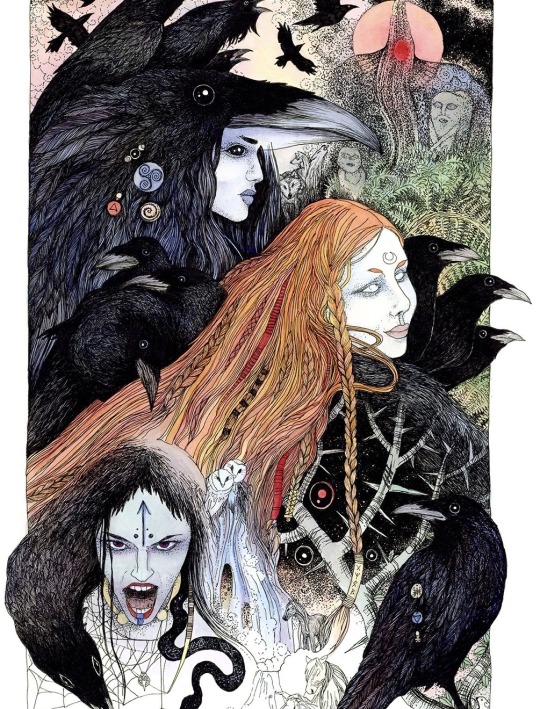
The Morrigan: Irish Goddess of death, fate, war & sovereignty.
The Morrígan, also called the Phantom Queen, is a bewitching goddess associated with war and fate, often appearing as a crow, encouraging bravery and strength in battle, & foretells doom or victory. The Morrígan is often described as a trio of sisters, representing the goddess's role as a guardian and warrior. She can appear in many forms like an old woman, a crow, a beautiful sorceress, or a fearsome creature.
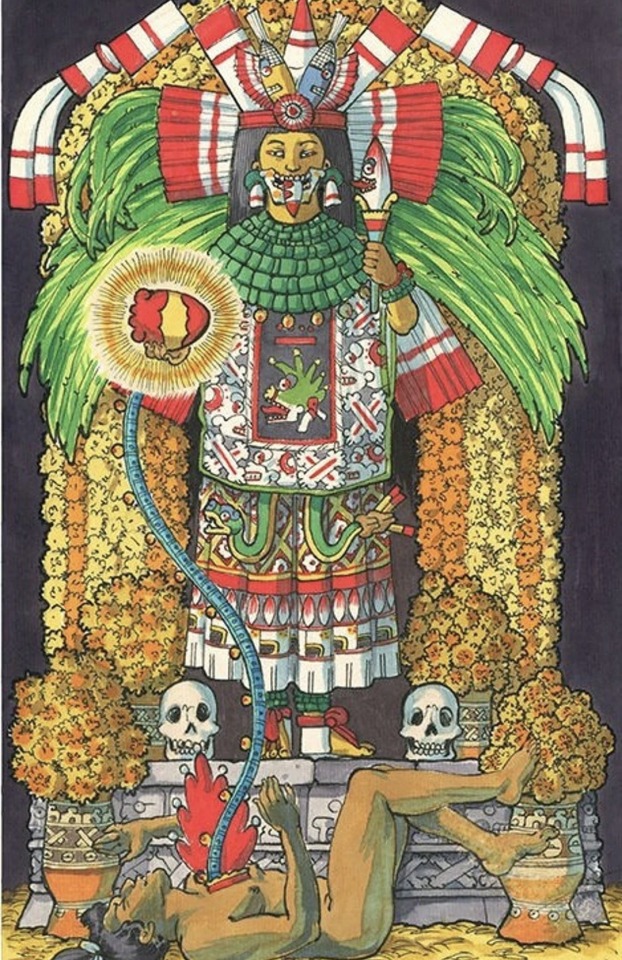
Mictecacihuatl: Aztec Goddess of death & the underworld.
Also known as the Lady of the Dead, Alongside Mictlantecuhtli, her consort, she rules over Mictlán, the lowest Aztec underworld realm. She guides the departed souls on their transformative journey from life to the afterlife and embodies the profound duality of existence. The Dia de los Muertos is a vibrant festival that allows families to honor deceased loved ones with ofrendas and calavera imagery, inspired by Mictecacihuatl, who is now called Santa La muerte.

Kali-ma: Hindu Goddess of destruction, death, change & time.
Kali-ma is the wrathful & protective force of Shakti (energy), She's a caring mother to her devotees/innocent people and the destroyer of evil, she expresses the dual nature of the destruction that must come before new beginnings. Kali ma embodies the power of all, transcending good & evil to protect her people against negativity. Kali ma is Mother Nature, primordial, nurturing, and devouring, She is vested in freeing beings, granting salvation.

Hel: Norse Goddess of death, the underworld & decay.
Hel, the half living and half dead goddess, is one of Loki's children, and rules over the realm of the dead, she mostly receives those who died of illness or old age in her realm. Hel is often depicted as a fearsome figure, and in Her realm, Helheim, is considered one of the nine worlds in Norse cosmology and is located in the lowest part of the universe. In the events of Ragnarok, Hel plays a crucial role. It is foretold that she will lead an army of the dead to fight against the gods.

Morana: Slavic Goddess of death, winter, magic & dreams.
Morana is a Slavic goddess associated with seasonal agrarian rites based on the idea of death and rebirth of nature. the death of Morana at the end of winter becomes the rebirth of Spring of the Goddess Vesna, representing the coming of Spring, joy & life. She is still worshipped to this day and is often described as a vengeful, powerful goddess. She is married to the spring/love God Yarilo but their relationship is not seen as healthy.

Izanami: Japanese Goddess of Death, darkness & creation.
Izanami is a Shintō creation mother goddess who became the Japanese goddess of death after she died while giving birth. Her name, Izanami, means ''the female who invites.''. She can create many lands and other divine beings, has the power of death and could command gods/spirits of the underworld. Izanami & Izanagi are the creators of the Japanese archipelago and the creators of the powerful deities Amaterasu, Tsukuyomi, and Susanoo.
#religion#religions#mesopotamian#mesopotamian mythology#african mythology#greek mythology#Hellenism#irish mythology#celtic mythology#aztec mythology#Hinduism#hindu mythology#indian mythology#norse mythology#slavic mythology#japanese mythology#Shinto#goddesses#Ereshkigal#oya#the keres#the morrigan#morrigan#Mictecacihuatl#Kali ma#hel#morana#Izanami#Shakti#lotus list
81 notes
·
View notes
Text

Masked Assyrian Winged Genie.
Hand carved in sandstone, now in possession of the British Museum.
Can be viewed here: https://www.britishmuseum.org/collection/object/W_2020-6011-1
#carving#stone carving#sculpture#art#traditional art#ancient history#ancient art#archaeology#antiquities#ancient civilizations#assyria#neo assyrian#ancient assyria#mesopotamia#mesopotamian art#mesopotamian#british museum#museum#the british museum#hand crafted
282 notes
·
View notes
Text

Judith holding the Head of Holofernes by Jean-François Godefroy
#judith#holofernes#art#jean françois godefroy#judith and holofernes#biblical#bible#assyrian#assyria#general#book of judith#bethulia#siege#war#camp#tent#city#religion#religious art#christianity#christian#jewish#nineveh#nebuchadnezzar#mesopotamia#mesopotamian#sword#helmet#shield#heroine
131 notes
·
View notes
Text
Mesopotamian Months
🌾 Some Notes 🌾
I cannot render these from screenshot to alt text / text ID, because the technology cannot read these texts correctly and often spouts out gibberish, my apologies.
Information on "normalizing" the languages LINK
For accuracy I maintained the notation of the book so vowels containing accent marks and the common Š which is pronounced like SH in shoe. Ĝ which is a tricky ng sound. Also some dotted consonants and Ḫ , but don't ask me how to pronounce those.
🌾My Source🌾
My two sources for this post are:
Festivals & Calendars of the Ancient Near East by Mark Cohen 2015
With some information coming from The Cultic Calendars of the Ancient Near East (LINK) by Mark Cohen 1993.
I tried to rely mainly on the 2015 book but I can't help but use some of the 1993 books since I've read it.
I'm positive there are other sources for months and such, but this is the most extensive and enjoyable— if I magically was an Assyriologist then I'd be able to use all the books references from so many other Assyriologists' assertions, papers, debatable concepts, and probably books, that I could read to further understand... alas I can't do that. So I stick to these books because calendars are generally neglected in Mesopotamian history books unless discussing specific reigns of King or Empires.
While neither have cuneiform in the book, it has extensive sign notation and references for those who know how to find cuneiform based on transliteration of signs. It is a very dense academic read, but some sections can be very useful for those who have at least some knowledge of university level reading.
🌾New Year🌾
The New Year takes place on the first crescent moon after the Spring Equinox.
The book mentions the Akiti festival Link (Akitu in Akkadian) the "New Year", often throughout the entire book, it also has an entire chapter for it on page 400, 1993. The origins of the Akiti can be found in page 125, 1993.
It seems religiously the "New Year" happened twice— the first crescent moon after the Spring Equinox & Fall equinox, to maintain prosperity for the coming 6 months. Most calendars month 1 starts in Spring. The original Akiti appears to be from Ur.
🌾City of Nippur's Calendar🌾
The amount of Mesopotamian calendars and month names is dizzying and worthy of a 400+ page book. However, it is Nippur's months that stood the test of time, continuing past the Sumerian language's death in the form of logograms/sumerograms.
Nippur served as the focal point for the religious life of the Sumerian cities and so it is understandable that its calendar would be the one to endure after the collapse of the Ur III empire. It became the official calendar under Isbi-Erra, who founded a kingdom with its capital at Isin after the collapse of Ur. Thereafter, the Sumerian writing of the Nippur month names or their abbreviation continued down to the end of the cuneiform tradition, but only as logograms for the month names of the Standard Mesopotamian calendar. (pp115, 2015)
Nippur's calendar dates all the way back to the 3rd millennium BCE while the full list of 12 names on a single tablet is known from Ur III (2112-2004 BCE) many of its months can be traced back to the Early Dynasty Period (approx 2900-2350 BCE). Its old to say the least.

🌀Months🌀
(pp116, 2015)
Bárazaggar
Ezemgusisù
Sigušubbaĝáĝar
Šunumun
Neiziĝar
Kiĝ -Inanna
Dukù
Apindua
Ganganè
Kùsu
Údduru
Šekinku
[Intercalary] Diri-šekiĝku
🌾"Southern Mesopotamian Sumerian" Calendar 🌾
This calendar arises in the 2nd millennium BCE (2000-1001 BCE) based on Nippur's
The third-millennium Sumerian calendar used at Nippur was adopted throughout much of southern Mesopotamia after the fall of Ibbi-Sin of Ur, an innovation perhaps of the first monarch of the new Isin dynasty, Išbi-Erra (2017-1985 BCE). It would remain in use until the reign of Samsuiluna of Babylon. Noting that Isin is but 18 miles south of Nippur and that, before Išbi-Erra established Isin as his capital, Isin was of relatively little political importance, it is quite conceivable that Isin utilized the prestigious Nippur calendar during the Ur IlI period. However, whether Išbi-Erra's actions were the imposition of the calendar already in use at Isin (i.e., the Nippur calendar)—thus the "victor's" calendar— or was a shrewd maneuver purposely utilizing the commonly revered Nippur calendar, the intent was the same: the economic and political unification of his new empire. The symbolism of Nippur as a unifying presence was not lost on the Isin monarchs, who made special efforts to participate in the rites at Nippur, as seen by Lipit-Istar's central role in the gusisu festival.
As merchants, scribes, and representatives of the government of the Isin Empire conducted business in the Diyala region, the official calendar may have followed, eventually being used simultaneously with (or perhaps even replacing) the local, northern calendars, so that when the First Dynasty of Babylon arose, it too was already using this Southern-Mesopotamian Sumerian calendar.
Although Amorite calendars were utilized by the Semitic centers farther to the north until about the twenty-first year of Samsuiluna of Babylon (1749-1712 BCE), the Southern-Mesopotamian calendar was used at these sites as well. Tablets from Mari dating to the first half of the eighteenth century BCE not only attest to the utilization of this Sumerian calendar, but indicate that these Sumerian month names were not merely logograms to express a Semitic month name, but were actually pronounced. (pp 233-234, 2015)
🌀Months🌀
(pp236, 2015)
Barazagĝar
Gusisá
Siga
Šunumun
Neiziĝar
Kin-Inana
Dukù
Apindua
Ganganè
Ab(a)èa
Šekinku
[Intercalary] Diri Šekinku
🌾"Standard Mesopotamian" Calendar🌾
This calendar is Akkadian— "Babylonian" is a dialect of Akkadian. Artificially evolved from the Southern Mesopotamian Calendar which itself naturally evolved from Nippur's Calendar— a legacy reaching all the way back through time to the Early Dynastic Period.
When, at the close of the third millennium BCE, the Southern Mesopotamian Sumerian calendar was imposed throughout southern Mesopotamia, quite likely by Išbi-Erra of Isin, the written Sumerian month names were not simply logograms for month names. This Southern Mesopotamian Sumerian calendar was an adaptation of the Sumerian Nippur calendar. Since Sumerian calendars had been in use in Sumer during the preceding Ur III period, and since the month names found in Sumer during this subsequent period were Sumerian, it is reasonable to suggest that this use of the Nippur Sumerian month names indicates the continuance of a written and oral Sumerian calendar tradition. Farther north, Amorite calendars were in use, while at Sippar, positioned on the border of the two cultural spheres, Sumerian and Semitic calendars were used interchangeably. Later, the written Southern-Mesopotamian Sumerian calendar month names were relegated to being simply logograms for the month names of the Standard Mesopotamian calendar. Eventually just the first cuneiform sign of the Southern-Mesopotamian Sumerian calendar month name was used as the month's logogram. (pp381, 2015)
▪️
Based on these peculiarities in the assignment of month names, the Standard Mesopotamian calendar may have been an artificial creation, a means to unify a divergent empire. It may have been difficult to perpetuate the use of a Sumerian calendar outside of southern Mesopotamia. However, the economic and political advantages of a single, standard calendar were as obvious in the second millennium BCE as they had been on a smaller scale hundreds of years earlier to Išbi-Erra of Isin. So, rather than select one particular city's calendar as the new Reichskalender a policy that might have alienated those cities on whom another city's calendar would have been imposed the Babylonian administration invented a hybrid Reichskalender, culling months from various calendars throughout the realm and beyond, thereby hoping to gain international acceptance. The use of Southern-Mesopotamian Sumerian month names as logograms for this new calendar is a clear signal that there was something "unnatural" about the development and imposition of this new calendar. The retention of the Southern-Mesopotamian Sumerian month names on written documents may have been a negotiating point to gain the acceptance of the former Sumerian cities with their proud scribaltraditions. Total imposition of non-Sumerian month names (written as well as spoken) on the scribes using the Southern-Mesopotamian calendar could have been counter-productive. The continuation of a written calendrical tradition that could be traced back to venerated Nippur may havebeen important to the scribal community, which was proud of its eclectic and ancient position in society. In summary, the Standard Mesopotamian calendar may have been conceived by Samsuiluna (or possibly Hammurabi), who felt the urgency to foster a sense of nationhood among the cities of his empire, many of which were in rebellion against him. Use of this new calendar spread without the use of military conquest, probably the facilitation of international commerce was the catalyst for eventual acceptance in places not under Babylonian control, such as Alalakh and Assyria. (pp385-386, 2015)
While the month names are written in Sumerian they are read as Akkadian. A 2nd millennium bilingual text of the month names was found (pp380, 2015):

Here is a "conversion" of the Akkadian part of the bilingual text to the normalized Akkadian names found on book page 303, 1993:
🌀Months Sumerian to Akkadian🌀
First is Sumerian -> Second is Akkadian
Barazaggar -> Nisannu
Gusisá -> Ayaru
Sigga -> Simānu
Šunumunna -> Tamūzu (alt: Du'uzu)
Neizigar -> Abu
Kin-Inana -> Ulūlu / Elūlu
Dukù -> Tašritu
Apindua -> Araḫsamnu / Markašan
Ganganna -> Kissilimu
Abbaè -> Ṭebētu
Udra -> Šabāṭu
Šekinku -> Addaru
Diri Šekinku -> Addaru [Intercalary]
The Hebrew calendar is an adaptation of the Standard Mesopotamian Calendar.
At some period during or after the Judean exile in Babylonia in the sixth century BCE, the Judeans adopted the Standard Mesopotamian calendar, as had the Nabateans, the Palmyrans, and other Aramaic-speaking peoples. Judaic writings as preserved in the Bible use the Standard Mesopotamian calendar only in books dating to the post-exilic period. (pp383-384, 2015)
The book gives a table of normalized Akkadian names and their Hebrew counterparts without vowels (except U apparently). This can help you understand where the Sumerian & Akkadian months would fall on our modern Gregorian Calendar, by looking up Gregorian to Hebrew date translation.
I am giving the normalized version of the Hebrew names, from Wikipedia Link, and adding in the book's table transliteration in small parentheses.
🌀Months Akkadian to Hebrew🌀
First is Akkadian -> Second is Hebrew; (subtext transliteration)
Nisannu -> Nisan (nysn)
Ayaru -> Iyar ('yr)
Simānu -> Sivan (sywn)
Du'uzu / Tam(m)uzu -> Tammuz (tmuz)
Abu -> Av ('b)
Ulūlu / Elūlu -> Elul ('lul)
Tašritu -> Tishrei (tšry)
Markašana -> Cheshvan or Marcheshvan (mrḫšvn)
Kissilimu -> Kislev (kslv)
Ṭebētu -> Tevet (ṭbt)
Šabāṭu -> Shevat (šbṭ)
Addaru -> Adar ('dr)
During leap years with an intercalary month, the last months become Adar 1 (Adar Aleph) and Adar II (Adar Bet)
🌾 Using the Akkadian or Sumerian Months🌾
Using the Hebrew Lunisolar Calendar due to its affinity with the Standard Mesopotamian Calendar / Babylonian calendar, we can trace our steps backwards. In 2025, January 1st happens on Tevet 1 in the Hebrew Calendar. Tevet in Akkadian is Ṭebētu which in the Standard Mesopotamian calendar's Sumerian translation is Abbaè.
So January 1st 2025 is Abbaè 1.
This won't help find a year but those seem to be based on the current reigning king at the time anyways.
18 notes
·
View notes
Photo

Source details and larger version.
My modest collection of vintage camels can survive long periods without sustenance.
15 notes
·
View notes